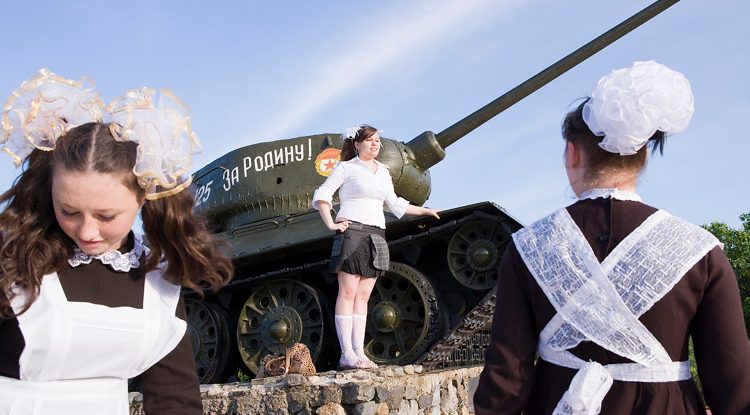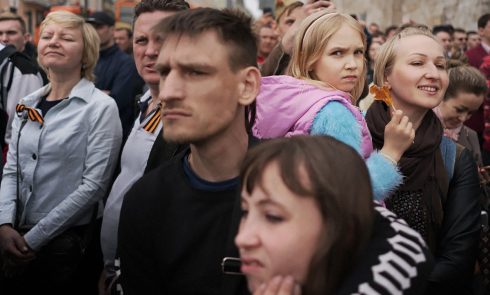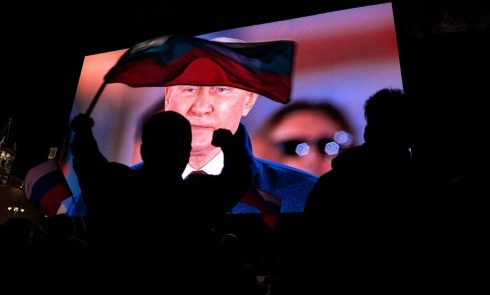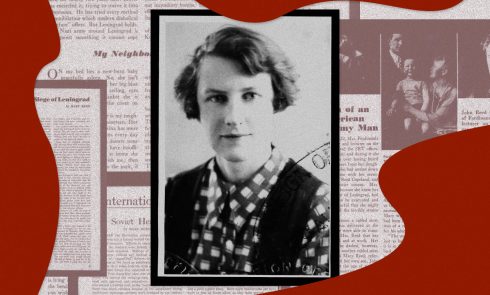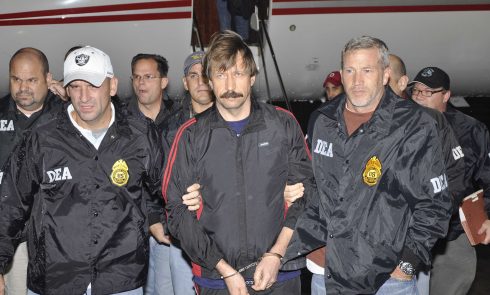In 1992, Russia got involved in the armed conflict taking place in Moldova, a sovereign country that had been one of the fifteen republics making up the Soviet Union. A short-lasting war resulted in Transnistria, a small region on the Dniester’s eastern bank, emerging as an unrecognized state. Since then, the self-proclaimed Pridnestrovian Moldavian Republic (PMR) has always been under Russia’s strong influence. In the spring of 2022, Russian military started sharing their plans of gaining direct access to Transnistria by capturing the Ukrainian city of Odesa. Holod’s special correspondent Olesya Ostapchuk traveled to Transnistria and Moldova to see the 1992 war’s lingering effects on people’s lives there and to find out how Russia’s invasion of Ukraine has changed life in the breakaway region.
“Don’t let the Polish come to you, or you’ll end up their servants,” a Transnistrian resident Vladimir Golovashov, 78, messaged his Ukrainian niece in the spring of 2022. He decided to do it after he heard Russian Security Council Secretary Nikolay Patrushev’s statement that Poland was “starting the occupation of Ukraine.” Upon sending the message he had a second thought: that he should have written “slaves” rather than “servants.”
“Better off with Polish occupants than with Russian fascists,” his niece replied.
Golovashov is scrolling the chat at his apartment in Tiraspol, the Transnistrian capital. Portraits of his Ukrainian relatives are carefully lined up on a chest of drawers. “It doesn’t upset me that we have different views,” Golovashov muses. “They don’t nag me when I visit, so I’m also tactful with them. I tell them: ‘Guys, you don’t know anything but the Ukrainian information. Ukraine is blinding you so that you don’t see the truth. That’s why you’re reasoning the way you are.’”
Golovashov’s family history reflects the intricately intertwined stories of the Soviet republics which later became independent countries. His father was a Soviet army officer, a machine gunner stationed in western Ukraine. There he met and married Vladimir Golovashov’s mother—just before Germany attacked the USSR. “Dad was 23, and mum was twenty,” Golovashov says. “The Germans took them away to Germany by force. There I was born.” He says his parents were separated and sent to different labor camps. His mother had to work at a regularly bombed textile factory with an infant in her arms.
Once the war was over, Golovashov’s mother brought him to Odesa region. Throughout his school years there he always spoke Ukrainian. Soon after finishing school, Golovashov came to Tiraspol, which is just a couple of hours’ drive from Odesa. Later he followed in his father’s footsteps: joined the military and ended up fighting in Kabul with his tank battalion in 1980s.
Upon retiring from the Soviet army, Golovashov came back home, but just several years later he had to fight in yet another war. This time—against his Moldovan compatriots.
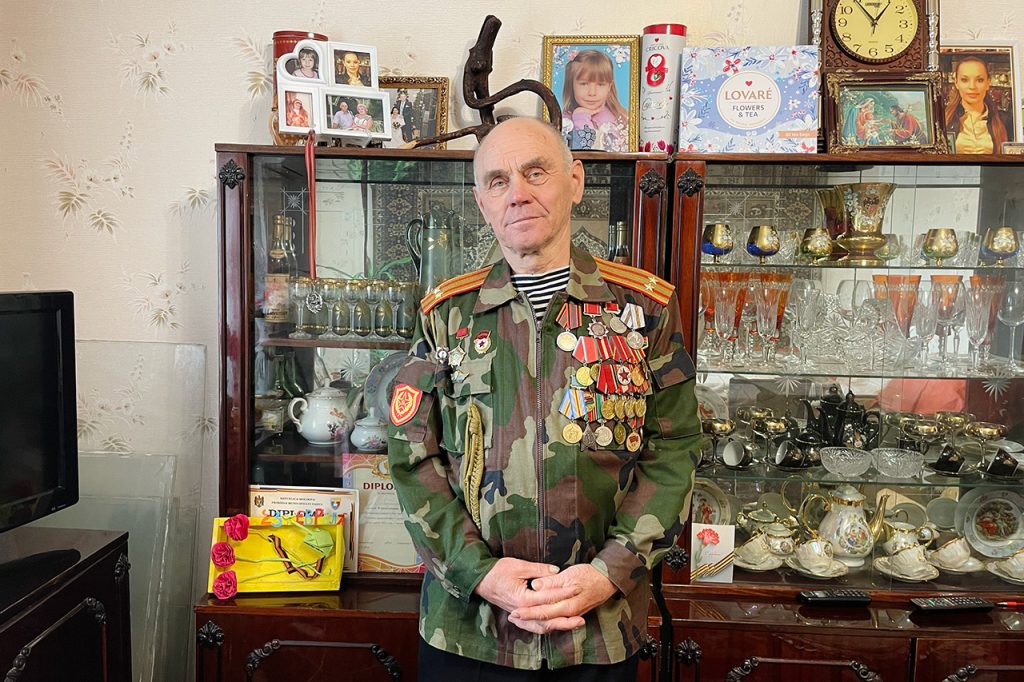
The USSR is the Motherland
On September 1, 2022, Moldovan schools held homeroom meetings at which teachers thanked servicemen who defended the country’s territorial integrity 30 years ago. The government also declared the year 2022 the “Year of Gratitude” to the war veterans. This policy sparked a negative response on the other side of Dniester, where it is seen as “promoting respect for the combatants who in 1992 were killing men, women and children” of Transnistria.
The memory of the 1992 conflict, which resulted in Transnistria’s de-facto secession from Moldova, is still alive. In Transnistria that short war affected practically everyone: some lost their homes, some their family members. Black gravestones with images of young men fallen in 1992 occupy several rows at the Tiraspol cemetery. The key dates of that war are commemorated as national holidays.
In large measure the roots of that conflict lie in the way administrative borders were set up in the Soviet Union. Bessarabia, the historical region where the territory currently under control of Moldova’s government lies, and Transnistria were actually a part of the same entity only for just half a century—when they were the Soviet Republic of Moldova. That period started when the USSR grabbed Bessarabia from Romania in August 1940, after it had been recognized by Germany to be in the Soviet sphere of interest under a secret protocol to the 1939 Molotov–Ribbentrop Pact. And it ended in September 1990, when local parliament deputies declared that now Transnistria considers itself a full-fledged Soviet republic on par with Moldova. Prior to the Second World War, the two regions separated by a river had existed for most of their history as parts of different countries, or, at the very least, provinces.
Nikolay Kuzmin, a Transnistrian political analyst, journalist, and a member of the Apriori NGO, points out that for many centuries Transnistria had been populated sparsely. The region was constantly ravaged by wars waged by the regional powers, he explains. The situation started changing in the late eighteenth century, when Transnistria became a part of the Russian Empire, Kuzmin says. The region saw substantial migration from Russia. Some ended up here as exiles, like Kuzmin’s grandmother, who faced repression during Stalin’s collectivization. She was an Old Believer, a member of a dissenting religious group that broke up from the mainstream Russian Orthodox Church back in the seventeenth century. Others moved to Transnistria to start a farmstead—attracted by a warm southern climate and abundance of vacant fertile land.
“People who lived here viewed Russia as their motherland, the core of the empire, the metropole to which they belonged and could associate themselves with,” Kuzmin explains. “Later the USSR became that motherland for them.” The fates of the greater part of Transnistria and of the rest of Moldova diverged after the 1917 revolution. Bessarabia, like many regions of the Russian Empire with predominantly non-Russian population, saw an upsurge of ethnic movements. By the end of the year, the Moldavian Democratic Republic was proclaimed there, which became a part of Romania several months later and remained so until WWII. In present-day Moldova this is called the “Union of Bessarabia and Romania”, while in Transnistria the period is referred to as “Romanian occupation”. As for Transnistria, following 1917 it was ruled by the authorities in control of Ukraine, and when the USSR was formed in 1922, the region joined it. Thus, lands on the Dniester’s left bank spent more time in the USSR than those on the right.
Kuzmin thinks that neither during the imperial times, nor during the Soviet period did the state try to resolve ethnic problems of the region, whose population never felt as a whole. “In the 1990s, this unresolved problem took such a form [of a direct conflict],” Kuzmin explains. “Moldova started defending its right to the Moldovan identity, which the multi-ethnic left-bank population wasn’t eager to embrace. At that point the bureaucratic elites came into the picture and started promoting secession. That’s how Transnistria came into being.”
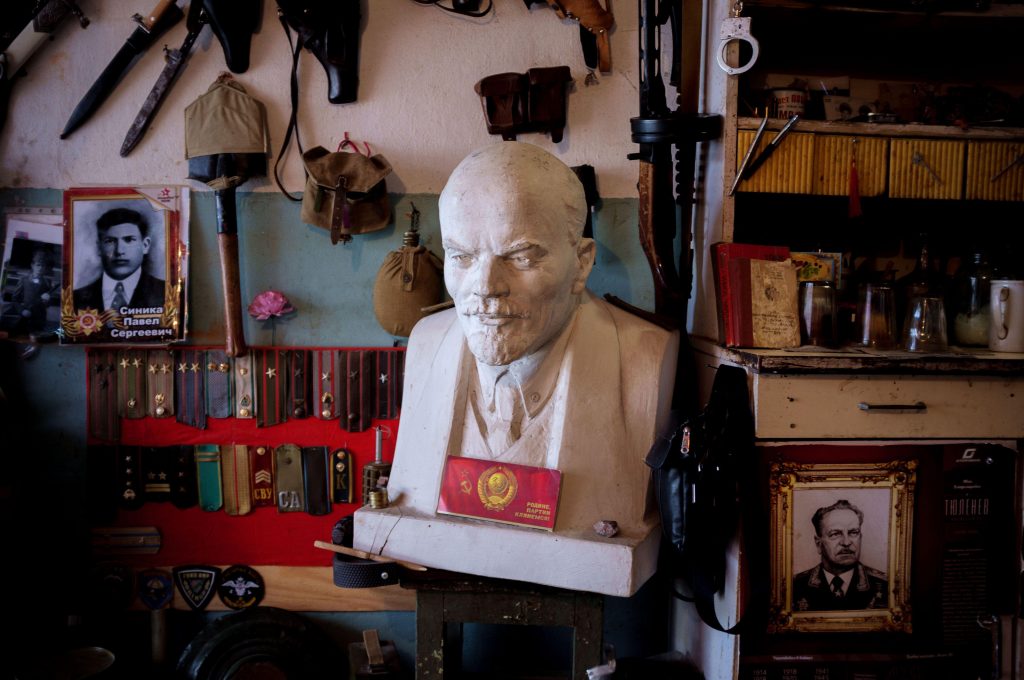
New reality
Like in Ukraine of the 2010s, language has been among the key issues. “Today it’s especially important to remember those who died for the liberation of Tiraspol, for the Russian language,” Alla Melnichuk, the director of Tiraspol Unified Museum, says. “Can you imagine what slogans were used at the time [in Moldova]? ‘Suitcase, train station, Russia,’ and so on.”
Perestroika evoked a growing sense of national identity among the peoples across the Soviet republics, and in the summer of 1989 authorities in Chisinau passed a law providing Moldovan with the status of the only state language in the republic. The Russian-speaking Transnistria saw this as the beginning of Moldova’s “Romanianization” (as Moldovan language is nearly identical to Romanian) and mounted protests. In response to that the Popular Front of Moldova staged rallies in Chisinau at which the ‘radical’ slogans mentioned by Melnichuk were voiced. At the same time, according to a report by the Memorial human rights organization, Russian-speaking people in Moldova started being discriminated against, for example, while looking for a job. The Russian-speaking members of Moldova’s Supreme Council elected in Transnistria faced insults and even were beaten up.
In June 1990, Moldova declared its sovereignty, and independence in July 1991. Simultaneously with that, a movement advocating the region’s autonomy emerged in Transnistria. In the fall of 1990, a congress of people’s deputies in Transnistria proclaimed the creation of Pridnestrovian Moldavian Soviet Socialist Republic, which later came to be simply Pridnestrovian Moldavian Republic (PMR). The Supreme Council of Moldova considered this entity illegal. USSR President Mikhail Gorbachev urged Moldova to reconsider its language legislation to secure rights of non-Moldovan-speaking population; however, the Kremlin did not recognize Transnistria’s autonomy.
Yevgeny Boyko, who is now a marketing expert, experienced these tensions firsthand in his everyday life as a child living in Chisinau in a Russian-speaking family. Before the conflict, he would regularly spend summers with his grandparents in Nezavertailovca, Transnistria. “We were the same country, there was no polarization in the society,” he says. Boyko had attended a Russian-language school, but after the language legislation was changed, he had to go to a Romanian one. There he would be called a Russophone, while in Nezavertailovca, where he continued to visit his grandma on holidays, they would call him a “Romanian.”
“I experienced firsthand all the absurdity [of this division],” Boyko recalls. He adds that the polarization in the society was artificial: “Back then, everyone was impoverished, there was a lot of frustration, people wanted to find a scapegoat. Throwing just a spark into a poor, embittered society is enough, it flares up instantly. A campaign of Romanophobia was happening in Transnistria. The media and opinion leaders started scaring us that the Romanians want to invade, so we need to defend ourselves. The population was frightened. On this side of the Dniester there was a different campaign: ‘Transnistrians are separatists who are trying to grab a piece of our land, so we must fight for it.’”
Former Moldovan Deputy Prime Minister for Reintegration Alexandru Flenchea shares the opinion that the issue of Russian-speaking population’s discrimination has been greatly mythologized. As an example, he points out that all meetings of the Moldovan parliament have been conducted in two languages, Moldovan and Russian, for all these 30 years. In explanation of the “excesses” that took place at the time he says that “the majority populations of these republics, which had been deprived of the opportunity to speak and study in their own languages, reclaimed their right to do that,” which “created a new reality for the Russian-speaking population.”
Flenchea believes that the build-up of that local conflict followed the same pattern as was later observed in post-2014 Donbas. “The Russian language factor was actively exploited,” the former official says. “All of the propaganda was built around it. There was a disinformation campaign aimed at distorting the essence of legislative acts. Weapons were issued to civilians. All of a sudden the population fighting for their rights had assault rifles, machine guns, armored personnel carriers on their hands. A little later artillery and tanks arrived. People started occupying police precincts, detaining [Moldovan] police officers and arresting them. Chisinau responded to that by deploying special police forces [to Transnistria] .”
For how long are you going to keep killing my brothers?
After Transnistria declared independence in the fall of 1991, the self-proclaimed republic set up its own small army. But more importantly, the Soviet Fourteenth Guards Army, which reported to the Russian Federation after the dissolution of the USSR, had been stationed in Transnistria.
Although for the most part of the conflict the Fourteenth Army remained neutral, that didn’t prevent Russian sentries from turning a blind eye to Transnistrian militia pilfering arsenals, a military historian Yevgeny Norin wrote. That even prompted commander Yury Netkachev to order his subordinates to dismantle some of the military equipment.
That’s how hostilities in Transnistria began. Local militias were formed from workers, retired soldiers, and active servicemen of the Fourteenth Army who “deserted to the war” in disregard of their commanders’ orders. It was at that moment that Vladimir Golovashov returned to the military service—in his words, he joined a battalion which guarded some “very important factories.” Meanwhile, Moldova was mustering its armed forces from police officers.
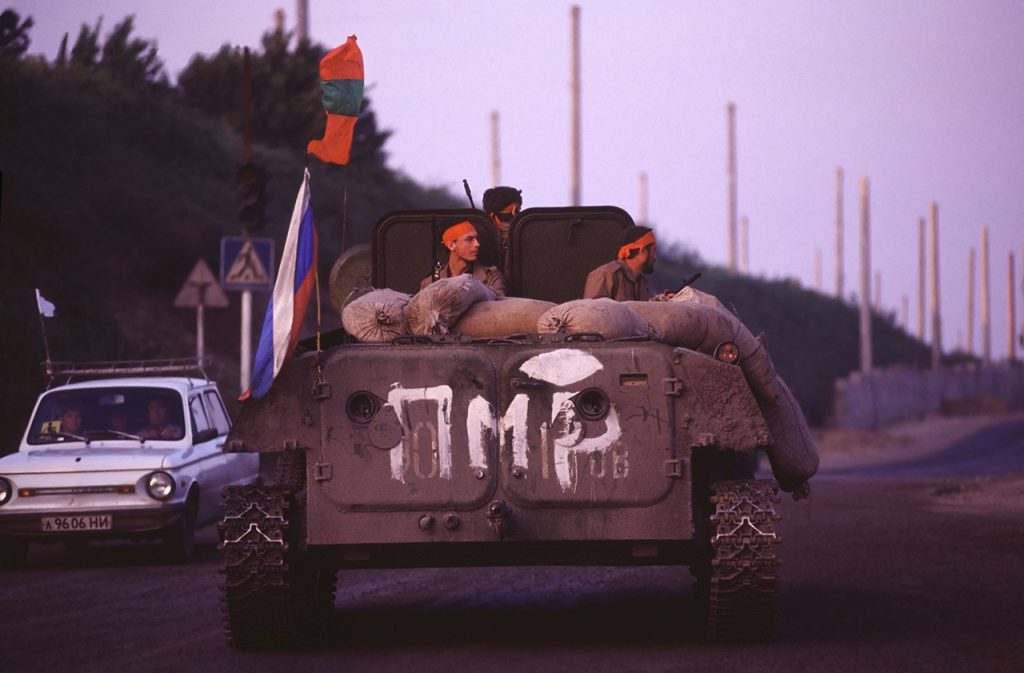
At first, the war in Transnistria looked like sporadic armed clashes. Overnight from March 1 into March 2, 1992, a car with Transnistrian policemen inside was sprayed with bullets in the city of Dubasari on Dniester. In response to that Transnistrians demanded that Moldovan police officers working in Dubasari leave their stations. Tensions escalated: the Moldovan army attacked the Fourteenth Army’s regiment stationed in Cocieri. Volunteers, which included all sorts of people from former members of Riga special police units to Cossacks, started arriving in Transnistria. Among them were Dmitry Rogozin, who would later head Russia’s space agency Roscosmos, Igor Girkin (Strelkov), who would become a key militant figure in Donbas in 2014, and writer Eduard Limonov.
Moscow was regularly receiving reports that the situation in Moldova was getting worse and could escalate into a full-blown civil war. For Nikolay Fomichev, the reality of this threat was exemplified by his own extended family. Now he is 63 years old. Fomichev had been a Soviet career officer. After leaving service, he joined Moldovan police.
His father-in-law was a native of the Transnistrian town of Ribnita, which was creating certain tensions in the family. “We were sitting and drinking, I had my assault rifle and my armor vest nearby,” the former policeman recalls. “And he says, ‘for how long are you going to keep killing my brothers?’” On another occasion Fomichev went to Transnistria together with his family—to attend the funeral of his wife’s grandmother. “On the way back there were these fellas standing at a checkpoint—Cossacks, Guards Army soldiers. They asked if I had been in the war,” he recalls. “And they agreed among themselves: ‘We’ll waste him now.’” Fomichev says he escaped death by saying that he was a Soviet warrant officer.
Transnistrian militiamen and volunteers believed that they were fighting against the “Romanianization” of the Russian-speaking region. “The national flag, anthem, and Moldova’s territorial division became absolutely identical to the Romanian ones, and the border between the two countries had long been open,” wrote journalist Yefim Bershin, a native of Tiraspol and eyewitness of those events, in his book The Wild Field. Transnistrian Chasm. “And most importantly, shells and mines manufactured in Romania were exploding on the Transnistrian soil.”
At the end of March, soon after Transnistrians disarmed the Moldovan police department in Dubasari, Moldovan President Mircea Snegur declared a state of emergency and went on to say that his country was at war with Russia—Snegur’s statement was based on the fact that Transnistrians were using the Fourteenth Army’s weapons. Russian President Boris Yeltsin responded by saying that Russia would shortly withdraw the army from Transnistria. After that, Moldova deployed tanks to the self-proclaimed republic. Transnistria declared mobilization and started handing out weapons to militiamen.
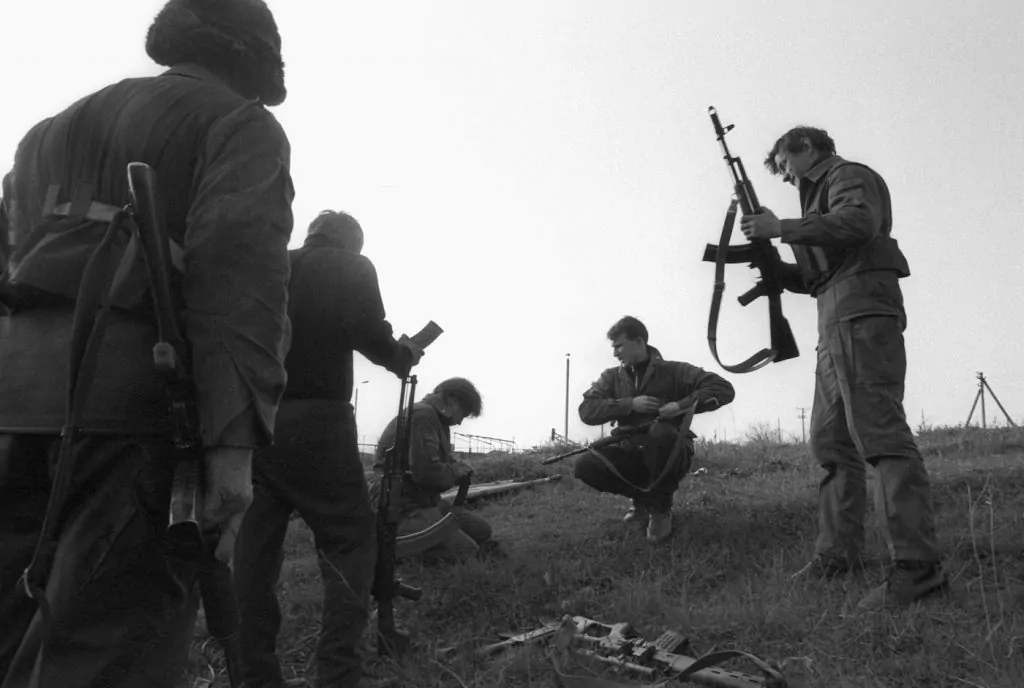
In late June 1992, Moscow authorized the Fourteenth Army to intervene in the conflict and dispatched Gen. Alexander Lebed, who had made his name the previous year by siding with Yeltsin supporters during the August Coup, to resolve the situation in Transnistria. Russian authorities tasked him with preventing bloodshed, taking bases and weapon and ammunition storage sites under control, creating preconditions for a peace settlement, and, if necessary, withdrawing officers and munitions.
“I flew there just to organize the evacuation,” Lebed recalled later. “There I wandered around parks, and saw that they were full of tanks, howitzers, combat vehicles, and that there were enough dummies hanging around to mount all those vehicles. I drove along the bank, tried to figure out why people were fighting each other. No one knew that. Nor how it was supposed to end.” The Russian general got down to a decisive action: in order to finish the war, he decided to fight. He created a defensive ring around Tiraspol. “As convoys of Russian APCs and IFVs were running,”—Vladimir Golovashov recounts—“I had this urge: I reached to the driver and gave him my knife, saying ‘Hey, take it, fella! Thank you, for coming to us, defenders.’”
Next, on Lebed’s orders, the Fourteenth Army started shelling Moldovan troops from heavy artillery. After that Moldova requested a ceasefire. On July 9, 1992, Russian President Yeltsin and Moldovan President Snegur signed a ceasefire, followed by the Agreement on the Principles for a Peaceful Settlement of the Armed Conflict in the Dniester Region of the Republic of Moldova on July 21. This episode made Gen. Lebed a hero both for Transnistria and for Russia. Soon, he left for Moscow, where he would later make a career in politics. The security zone established along Dniester’s both banks is still guarded by a peacekeeping force, which comprises servicemen from Russia, Transnistria, and Moldova. Prior to March 2022, it also included ten Ukrainian observers, but Kyiv recalled them. Another military contingent maintaining its presence in the region separately from the peacekeepers is the Operational Group of Russian Forces (OGRF) tasked with assisting the peacekeepers and guarding Soviet military warehouses. It numbers about fifteen hundred troops, which are mostly recruited locally.
Serving with the OGRF is considered a big honor by many Transistrians. “For Transnistrians there is an absolute evil, the war, and absolute good, the peace,” Kuzmin says. “And that absolute good was created by the Russian peacekeeper, who is a sacred figure around here.” To confirm this status, the Transnistrian criminal code contains an article titled “Denial of the positive role of Russian Federation’s peacekeeping mission.” It was incorporated in the code in 2016 at the initiative of Vadim Krasnoselsky, the current president of the self-proclaimed republic. The first criminal case under this article was opened in 2020: a resident of Tiraspol was accused of criticizing the peacekeepers in a conversation with the principal of the school where a relative of his studied. The Ministry of State Security learned of the conversation from the principal himself. That time the offender got away with a fine for insulting the president.
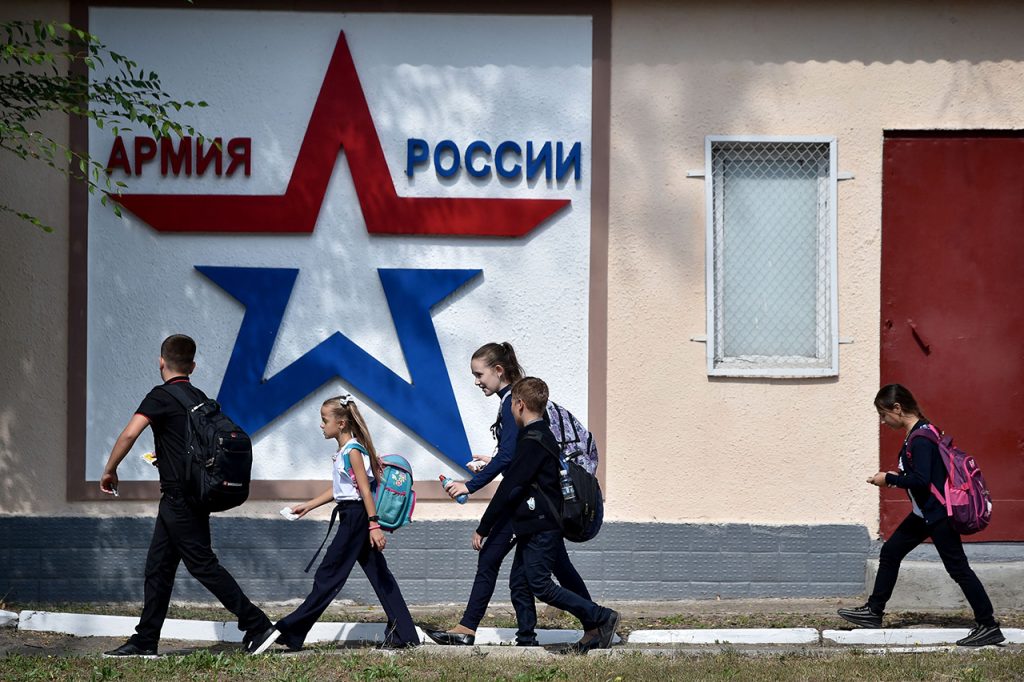
We’re all equal, just like before
“You’re probably feeling at home here, right?” Vladimir Golovashov asks me as we’re walking the streets of Tiraspol. “Here are Russian troops, and here are Russian culture monuments.”
Monuments are, indeed, numerous. In Tiraspol’s central park, on the Suvorov Square, public utility workers are polishing a four-meter bronze statue of Catherine the Great, the one who ordered to set up the fortress around which the city was built later. The park celebrating the empress was just recently laid out in Transnistria, under Vadim Krasnoselsky’s personal supervision. The park fence features a double-headed eagle, nearby stand bronze and wooden grenadier figures. Another attraction of the park are the so-called “time milestones”, bronze scrolls listing important dates of Transnistria’s history, such as visits by Russian emperors or adoptions of some landmark documents.
“We are way more patriotic here than you in Russia,” Alla Melnichuk explains. “Residents of Russia may criticize something, they’re tired of some things in their country, but we have an optimistic attitude!”, she claims. This echoes Gen. Lebed’s words: back in 1994, he said that Russians in Transnistria are “more catholic than the Pope,” “the most Slavic among the Slavs,” and “are way more willing to defend Russia’s interests than the Russians in Russia.”
German historian, political scientist and Transnistria researcher Stefan Troebst notes that in the first post-war years the self-proclaimed republic shaped its identity using cosmopolitanism and insisting on the region’s ethnic and linguistic diversity. However, in reality the Transnistrian authorities have reproduced the Soviet model, and Russian language and Russian values have become more favored. Russian military leader Alexander Suvorov is officially revered as one of Transnistria’s “founding fathers” and liberator who freed Transnistrians from the Turkish yoke. It was after he seized the Ottoman stronghold Ismail on the Danube that Russia’s frontier moved to Dniester, and new settlements were started on its left bank. Suvorov is also featured on the local currency banknotes. Another historical figure respected in Transnistria is Vladimir Lenin. In 2017, Transnistrians laid flowers at his statue on the occasion of the centenary of the October Revolution. And in 2021, the Tiraspol statue of Lenin was included in the state program for the preservation of cultural heritage.
Today’s Transnistria is often called a sanctuary of the Soviet culture. Even its tourist logo, designed several years ago by Moscow-based Art. Lebedev Studio, features the words “from the creators of the USSR.” And that “Soviet sanctuary” is really the impression that Tiraspol leaves on the first visit, produced by the vibes of this place and the locals’ manner of talking, which is welcoming and suspicious at the same time. In an example of that attitude, Alla Melnichuk sent her poem in reply to additional questions from Holod:
There’s a strong people’s brotherhood in our past,
And we’re all equal in our present, just like before,
We built together and we’re much stronger together,
Even if there’s frontier and approaching war.
Николай Кузьмин.
“The historical process, the affinity with Russia, a longer time in the USSR as compared to Moldova, the events of 1992, in which these pro-imperial Soviet forces proved to be the good guys for them—all this factored in to produce such a blend of ideology in which Transnistrians have a positive attitude to Russia,” political analyst Nikolay Kuzmin explains.
According to Kuzmin, the Transnistrian authorities are building the local identity contrasting it with Moldova, which is portrayed as a “bad guy” under the hostile Romanians’ influence. “For Russia such a bad guy is the United States, and for Transnistrians it’s Moldova,” he goes on. “And there’s also such a character in our propaganda as Romanofascist. It seems at times that our media refer to the Romanians exclusively by that name.”
“Russia has its army in the Transnistrian region, Russia provides financial assistance to Transnistria; there is political influence, too,” Pavel Cazacu, a lawyer at the Promo LEX human rights NGO, says. “We cannot influence elections in Tiraspol, but the United Russia can.” Russian citizens living in Transnistria take active part in Russian elections; the ruling United Russia party candidates hold meetings with constituents there, and the party customarily gets a high percentage of votes in the region.
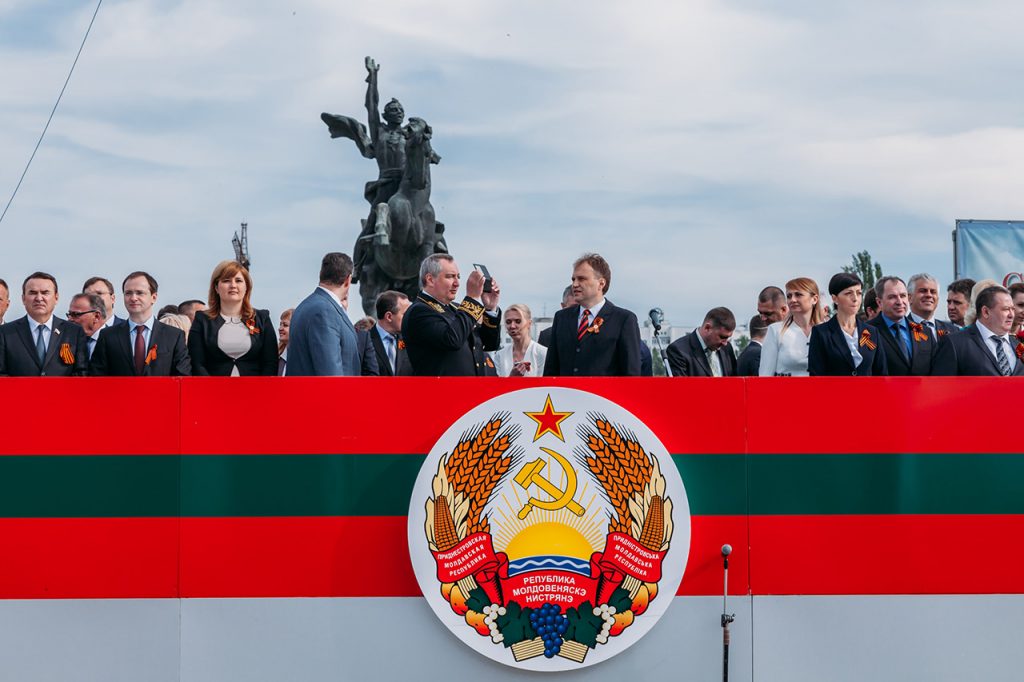
According to a poll by Extreme Scan, over a half of Transnistria’s residents believe it should join Russia. Vladimir Golovashov proudly demonstrates a letter from the Kremlin with congratulations from Russian President Vladimir Putin on the occasion of the V-Day. “Putin [in 2020] gave Transnistrian veterans a gift of 75,000 rubles (about $1,000—ed. Holod), and our president gave me 5,000 Transnistrian rubles (about $280—ed. Holod),” he says. Despite all that, Russia has not recognized Transnistria as an independent state. It is only recognized as such by other self-proclaimed republics of the post-Soviet space: Abkhazia, South Ossetia, and Nagorno-Karabakh.
Ex-Moldovan Deputy PM Alexandru Flenchea thinks that the current status quo actually suits everyone: in reality Russia and Transnistria need each other primarily for symbolic purposes. “From the military viewpoint, these fifteen hundred [Russian] troops don’t have any potential,” he says. “For Russia it is just a tool kept for an emergency, and a leverage for exerting pressure on Moldova: ‘We’ve marked our military presence, so NATO won’t show up there—good.’ It’s just some sort of a foothold.”
In late spring of 2022, it almost became a real foothold. At the end of April, Rustam Minnekayev, acting commander of Russia’s Central Military District troops, said that Russia was going to gain control over southern Ukraine in order to get “one more access to Transnistria, where instances of oppression of the Russian-speaking population have also been observed.” Immediately, the possibility of invasion from Transnistria became a topic of discussions in Ukraine.
The Russian peacekeepers were put on high alert, roadblocks were set up between Moldova and Transnistria, and authorities in Tiraspol declared a red level of terrorist threat. The level of tensions that spring was such that it seemed hostilities could break out at any moment.
Preferred country: the USSR
“In May, there was a feeling of fear, because we thought Ukraine would rush in here before Russia does,” Vladimir Golovashov recalls. “And there were five-hour-long lines on the border. Quite a few people who have relatives in Moldova took their families there. Moldova is better protected than we are. No one is going to attack Moldova. Now people have calmed down.” He has a Saint George's Ribbon attached to his military uniform, a symbol which is honored in Transnistria and has now been banned in Moldova. However, he didn’t have the opportunity to attend the V-Day parade in 2022, because Transnistria canceled the V-Day celebrations altogether due to tensions on the border.
Still, the war in Ukraine has not led to a recurrence of the old strife. To the contrary, it made people on the two sides of the Dniester closer to each other, as if reminding them of what happens when a political confrontation turns into an armed one. “After 30 years, Moldova and Transnistria have come a long way through a frozen conflict, and new generations who have not witnessed the short war have already come, but the older generation remembers destroyed houses, the killing of thousand military and civilians, 4,500 wounded and 100,000 refugees,” an Extreme Scan report reads. “This memory of the horrors of the war in Ukraine is enough for the people of Greater Moldova to be categorically against the war and any involvement in it.”
After February 24, 2022, Ukraine closed its border with Transnistria, and now all traffic into the self-proclaimed republic runs through Moldova. The two banks of the Dniester retain strong economic ties with each other. “Transnistria can talk all it wants about it being an outpost of the Russian World, but in terms of energy supplies the right and the left banks are incredibly interconnected,” Kuzmin explains. Russian gas flows to Transnistria via Moldova. The metallurgic plant in Ribnita, which makes a sizable contribution to Transnistria’s budget, gets environmental clearance from Moldova. Chisinau, in its turn, depends on electricity supplies from the Cuciurgan Power Plant in Transnistria.
The capital of Moldova is just a little over an hour’s drive from the capital of Transnistria, and lots of people travel both ways on a daily basis: some commute from Tiraspol to Chisinau for work, others visit their relatives. Entering Transnistria is usually only problematic for human rights activists and journalists: Holod correspondent spent just one day in Transnistria, and when she tried to enter the region again the following morning, she was asked to show her accreditation, which Transnistrian authorities currently do not issue.
Many Transnistrians have several passports: along with the self-proclaimed republic’s passport they can obtain Moldovan, Ukrainian, or Russian citizenship. This allows them to study, work, and travel outside the region. “The young people, the creative class, often live in several different cities at once,” Kuzmin says. “For example, before the war it could be a combination of Odesa, Tiraspol, and Chisinau, or Tiraspol, Chisinau, and Saint Petersburg.
In Flenchea’s opinion, it’s this mobility that allows Transnistrians to feel more free than the people in Russia. “On one hand, there’s a total political control over everything [in Transnistria]: politics, business, society—the state permeates everything,” the former deputy PM says, “on the other hand, people can freely travel to Moldova and, until recently, could also travel to Ukraine. Moldavian passports owners enjoy visa free travel to Europe. It’s just that in Transnistria people understand very clearly what they can and cannot say. It’s because they’ve never lived under conditions allowing freedom of speech.”
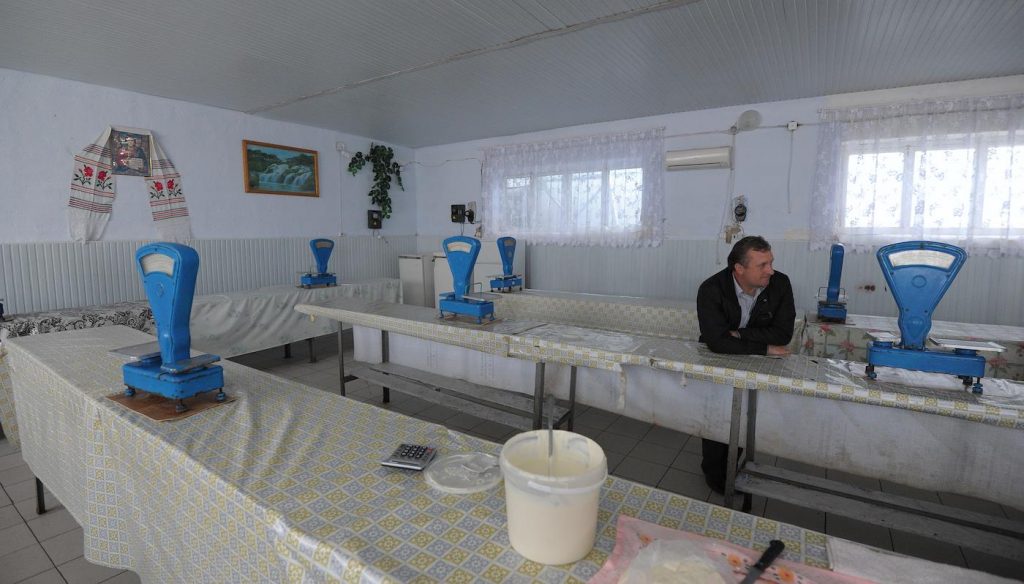
Transnistrian retiree Golovashov indeed frequented Ukraine before the war. Now he blames the neighbors for that their country “has gone bad” and turned into “an enemy.” “We used to have a normal life,” he says. “We had cheap dairy, meat products, and affordable alcohol. These days it’s gotten harder. Say, a little while ago a truck with medicines and protective equipment was unable to get here for a whole month. Now you can’t even bring them from Belarus, because Ukraine is closed. So, they have to tour through all Europe while previously they would be here within 24 hours. And I, with my lower back pain, won't be able to spend three days in a minibus.” Golovashov has even stopped to filter the water for boiling, because he can’t change the cartridge in his water filter anymore: the filters used to be shipped in from Ukraine, and after the war broke out the supplies ceased.
In recent years, former special police officer Nikolay Fomichev has more than once considered the idea of moving from Chisinau to Transnistria. One of his mates from the Moldovan militia of the 1990s had already done just that. Fomichev likes that Tiraspol goes on living the way it did during the Soviet times, even though he thinks that the Transnistrians’ political fears are unjustified. “The PMR mainly did not want to be with Romanians, but Moldova still has not united with Romania during these 30 years,” he says. “I live in Moldova and I want to live here without Russia. [Where and when I’d prefer] to live is in the USSR during Brezhnev times.”
